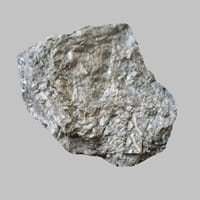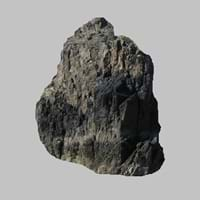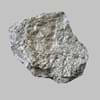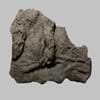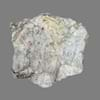Definition
Whiteschist is an uncommon rock type belonging to a class of metamorphic rock, this is formed at high-ultra-high pressures
Cataclasite is a type of cataclastic rock that is formed by fracturing and comminution during faulting. It is normally cohesive and non-foliated, consisting of angular clasts in a finer-grained matrix
Origin
Tasmania
Swiss Alps, Europe
Discoverer
Unknown
Michael Tellinger
Etymology
From French schiste, Greek skhistos i.e. split
From the Italian word cataclasi
Class
Metamorphic Rocks
Metamorphic Rocks
Sub-Class
Durable Rock, Soft Rock
Durable Rock, Medium Hardness Rock
Group
Not Applicable
Not Applicable
Other Categories
Fine Grained Rock, Medium Grained Rock, Opaque Rock
Fine Grained Rock, Opaque Rock
Color
Colourless, Green, Grey, White
Brown, Green, White, Yellow
Durability
Durable
Durable
Appearance
Banded and Foilated
Dull and Banded
Interior Uses
Decorative Aggregates, Interior Decoration
Decorative Aggregates, Homes
Exterior Uses
Garden Decoration, Paving Stone
As Building Stone, As Facing Stone, Paving Stone
Other Architectural Uses
Curbing
Curbing
Construction Industry
for Road Aggregate
As Dimension Stone, Building houses or walls, Cement Manufacture, Construction Aggregate, for Road Aggregate
Medical Industry
Not Yet Used
Not Yet Used
Antiquity Uses
Artifacts, Monuments, Sculpture, Small Figurines
Artifacts
Commercial Uses
Creating Artwork, Gemstone, Jewelry, Production of Lime
Commemorative Tablets, Creating Artwork
Types
Not Available
Protocataclasite, Mesocataclasite, Ultracataclasite and Foliated cataclasite
Features
High percentage of mica, Host Rock for Lead
Easily splits into thin plates, Is one of the oldest rock
Archaeological Significance
Monuments
Used
Not Yet Used
Famous Monuments
Data Not Available
Not Applicable
Sculpture
Used
Not Yet Used
Famous Sculptures
Data Not Available
Not Applicable
Figurines
Used
Not Yet Used
Formation
Whiteschist is formed by dynamic metamorphism at high temperatures and pressures that aligns the grains of mica, hornblende and other elongated minerals into thin layers.
Cataclasiste rocks mainly form by pressure deep under the Earth's surface, from the extreme heat caused by magma or by the intense collisions and friction of tectonic plates.
Mineral Content
Carbonate, Coesite, Quartz, Silica
Albite, Apatite, Augite, Biotite, Calcite, Enstatite, Epidote, Feldspar, Micas, Muscovite or Illite, Pyroxene, Quartz
Compound Content
CaO, Mg, MgO, Silicon Dioxide
Silicon Dioxide
Types of Metamorphism
Not Applicable
Not Applicable
Types of Weathering
Biological Weathering, Chemical Weathering, Mechanical Weathering
Mechanical Weathering
Types of Erosion
Chemical Erosion, Coastal Erosion, Glacier Erosion
Coastal Erosion, Wind Erosion
Grain Size
Fine to Medium Grained
Fine Grained
Porosity
Less Porous
Less Porous
Luster
Subvitreous to Dull
Vitreous
Compressive Strength
Not Available
Cleavage
Perfect
Not Available
Toughness
1
Not Available
Specific Gravity
2.86
2.1
Transparency
Opaque
Translucent to Opaque
Density
2.8-2.9 g/cm3
2.9-3.1 g/cm3
Specific Heat Capacity
Not Available
Resistance
Heat Resistant
Heat Resistant, Impact Resistant, Pressure Resistant
Deposits in Eastern Continents
Asia
Afghanistan, Bangladesh, Bhutan, China, India, Japan, Kazakhstan, Malaysia, Pakistan, Russia, Thailand, Turkey, Vietnam
China, India, Russia, Saudi Arabia, South Korea
Africa
Egypt, Ethiopia, Morocco, Nigeria, South Africa
Egypt, Ethiopia, Kenya, Madagascar, Morocco, South Africa
Europe
Austria, England, France, Georgia, Germany, Italy, Liechtenstein, Monaco, Norway, Slovenia, Spain, Sweden, Switzerland
England, Finland, France, Spain, United Kingdom
Others
Not Yet Found
Not Yet Found
Deposits in Western Continents
North America
Canada, Costa Rica, Cuba, Mexico, Panama, USA
Canada, USA
South America
Brazil, Colombia, Guyana
Argentina, Colombia
Deposits in Oceania Continent
Australia
New South Wales, New Zealand, Queensland
Central Australia, Western Australia
Whiteschist vs Cataclasite Characteristics
Though some rocks look identical, they have certain characteristics which distinguish them from others. Characteristics of rocks include texture, appearance, color, fracture, streak, hardness etc. Whiteschist vs Cataclasite characteristics assist us to distinguish and recognize rocks. Also you can check about Properties of Whiteschist and Properties of Cataclasite. Learn more about Whiteschist vs Cataclasite in the next section. The interior uses of Whiteschist include Decorative aggregates and Interior decoration whereas the interior uses of Cataclasite include Decorative aggregates and Homes. Due to some exceptional properties of Whiteschist and Cataclasite, they have various applications in construction industry. The uses of Whiteschist in construction industry include For road aggregate and that of Cataclasite include As dimension stone, Building houses or walls, Cement manufacture, Construction aggregate, For road aggregate.
More about Whiteschist and Cataclasite
Here you can know more about Whiteschist and Cataclasite. The life cycle of a rock consists of formation of rock, composition of rock and transformation of rock. The composition of Whiteschist and Cataclasite consists of mineral content and compound content. The mineral content of Whiteschist includes Carbonate, Coesite, Quartz, Silica and mineral content of Cataclasite includes Albite, Apatite, Augite, Biotite, Calcite, Enstatite, Epidote, Feldspar, Micas, Muscovite or Illite, Pyroxene, Quartz. You can also check out the list of all Metamorphic Rocks. When we have to compare Whiteschist vs Cataclasite, the texture, color and appearance plays an important role in determining the type of rock. Whiteschist is available in colourless, green, grey, white colors whereas, Cataclasite is available in brown, green, white, yellow colors. Appearance of Whiteschist is Banded and Foilated and that of Cataclasite is Dull and Banded. Properties of rock is another aspect for Whiteschist vs Cataclasite. The hardness of Whiteschist is 1.5 and that of Cataclasite is 3-4. The types of Whiteschist are Not Available whereas types of Cataclasite are Protocataclasite, Mesocataclasite, Ultracataclasite and Foliated cataclasite. Streak of rock is the color of powder produced when it is dragged across an unweathered surface. The streak of Whiteschist is white while that of Cataclasite is black. The specific heat capacity of Whiteschist is 0.92 kJ/Kg K and that of Cataclasite is Not Available. Depending on the properties like hardness, toughness, specific heat capacity, porosity etc., rocks are resistant to heat, wear, impact, etc.Whiteschist is heat resistant whereas Cataclasite is heat resistant, impact resistant, pressure resistant.
